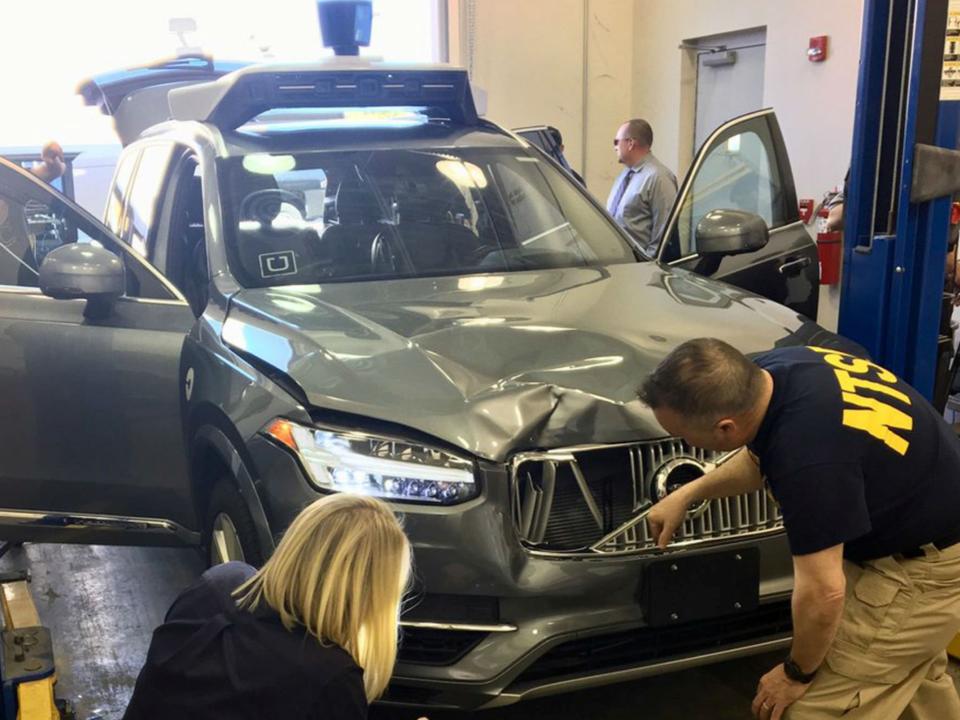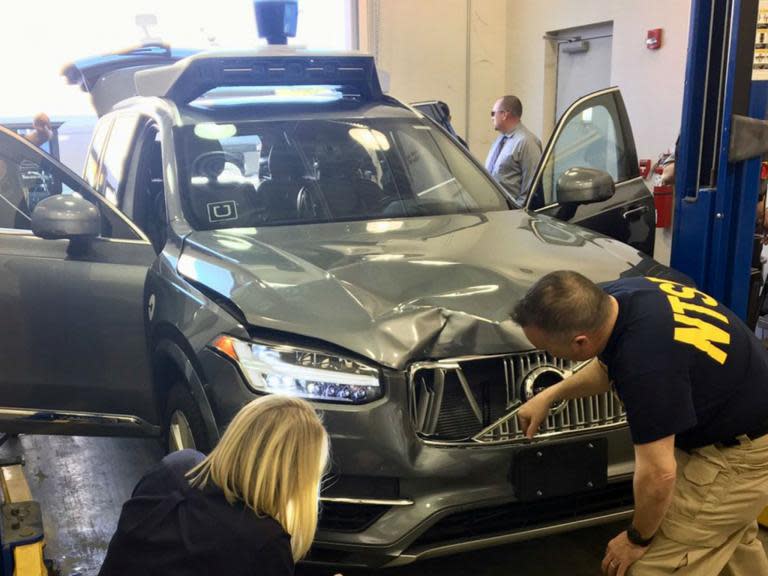Self-driving Uber's automatic emergency brake was switched off before fatal crash, report says
An autonomous Uber vehicle’s emergency braking system was switched off in the critical seconds before the car fatally struck a pedestrian in Arizona earlier this year, a report found.
The lethal March crash was the first known time a self-driving vehicle killed a pedestrian, and it raised grave questions about the future of the burgeoning autonomous vehicle industry. In the aftermath, Uber has suspended its self-driving car initiative in Arizona.
In a preliminary report detailing how the accident occurred, the National Transportation Safety Board (NTSB) noted that the car was equipped with an automatic emergency braking that does not function when the car is being controlled by its computer system, relying instead on a human to take over.
Self-driving cars like the one involved in the crash have an autonomous mode, in which a computer does the driving, and a manual mode in which a human backup driver takes over. The driver has a variety of ways of overriding the computer and taking control, including by using the brakes or the steering wheel.
“The vehicle operator is relied on to intervene and take action. The system is not designed to alert the operator”, the NTSB report said.
While the car registered the pedestrian about six seconds before impact, the NTSB said, the self-driving system determined an emergency brake was needed about 1.3 seconds before the vehicle struck and killed 49-year-old Elaine Herzberg.
As the seconds ticked away, the NTSB said the car identified Ms Herzberg “as an unknown object, as a vehicle, and then as a bicycle”.
Less than a second before the car hit Ms Herzberg, the human operator attempted to avert a crash by using the steering wheel, the NTSB said. Onboard video captured the operator glancing down repeatedly before the impact, which she told investigators she was doing to monitor the self-driving interface.
There were no signs the operator was impaired at the time of the crash, the NTSB said.
An Uber spokesperson responded to the report by saying the company has worked closely with federal investigators.
“As their investigation continues, we’ve initiated our own safety review of our self-driving vehicles program”, the spokesperson said in an emailed statement. “We’ve also brought on former NTSB Chair Christopher Hart to advise us on our overall safety culture, and we look forward to sharing more on the changes we’ll make in the coming weeks”.
A day earlier, the Tempe, Arizona police department said it had completed its investigation of the collision and submitted its findings to local prosecutors. Officials did not release any information on their conclusion.
Uber is one of a number of companies jostling in the crowded field seeking to dominate self-driving technology, which has drawn heavy investments from both technology firms and legacy automakers.

 Yahoo News
Yahoo News 

